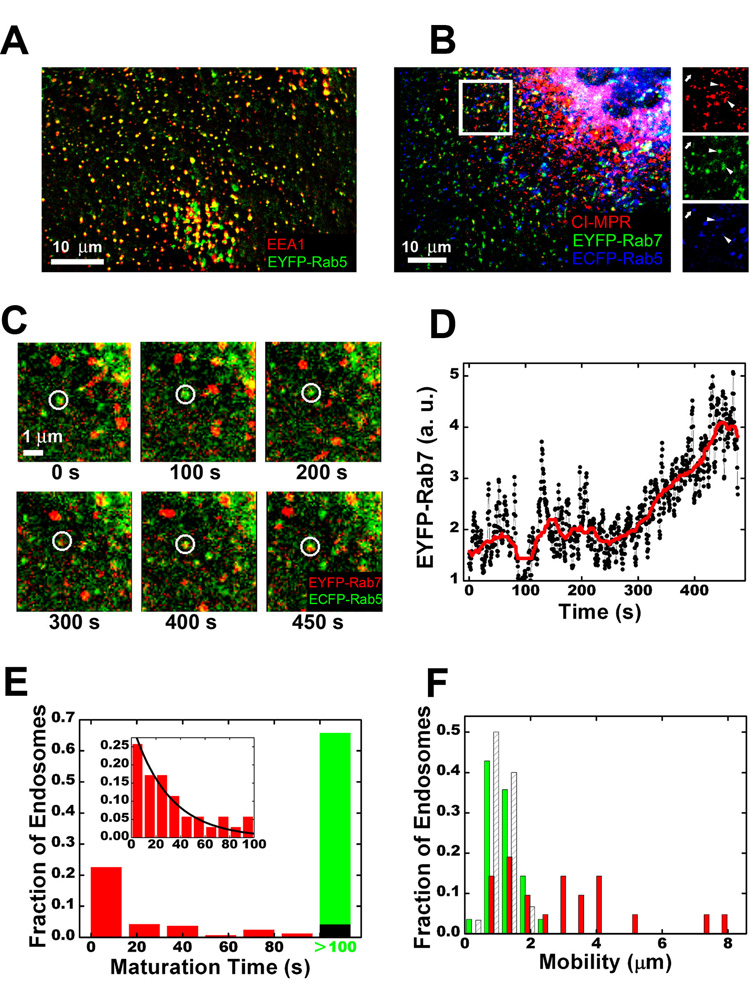Figure 1.
Early endosomes are comprised of two populations with distinct maturation kinetics and mobility. (A) Colocalization between Rab5 and EEA1. EEA1 was detected by immunofluorescence; Rab5 was detected by EYFP-Rab5. (B) Colocalization between Rab5, Rab7 and CI-MPR. CI-MPR was detected by immunofluorescence; Rab5 and Rab7 were detected by ECFP-Rab5 and EYFP-Rab7, respectively. The boxed region is magnified and shown in separated channels on the right. Arrowheads mark CI-MPR-positive spots that also contain Rab5 and Rab7; the arrow marks a Rab5-only endosome without CI-MPR. (C) The maturation of a Rab5-positive endosome as shown by the accumulation of Rab7 (see Movie S2). (D) The raw (black) and median-filtered (red) time-dependence of the EYFP-Rab7 intensity associated with the endosome shown in (C). (E) A histogram of the maturation time of many randomly selected Rab5-positive endosomes. Image acquisition begins at time = 0 and the maturation time is operationally defined as the time when the endosome accumulates detectable amount of Rab7. The green bar indicates endosomes with maturation time > 100 s. About 14% of the Rab5-positive endosomes already contain Rab7 at time = 0, these endosomes are included in the first bin. The inset is the maturation time histogram for the endosomes starting with only Rab5 and acquiring Rab7 within 100 seconds. The fit to a single exponential (black line) yields a time constant of 30 s. The black bar in the main histogram is the expected fraction of endosomes with maturation time > 100 s if all endosomes matured with the same single-exponential kinetics. (F) A mobility histogram of randomly selected Rab5-positive endosomes. The mobility is defined as the diameter of the smallest circle enclosing the trajectory of the endosome in 100 s. The slowly maturing endosomes (maturation time > 100 s, green) are relatively stationary compared to the rapidly maturing endosomes (maturation time ≤ 100 s, red). The shaded columns show a mobility histogram of all early endosomes in nocodazole-treated cells.

